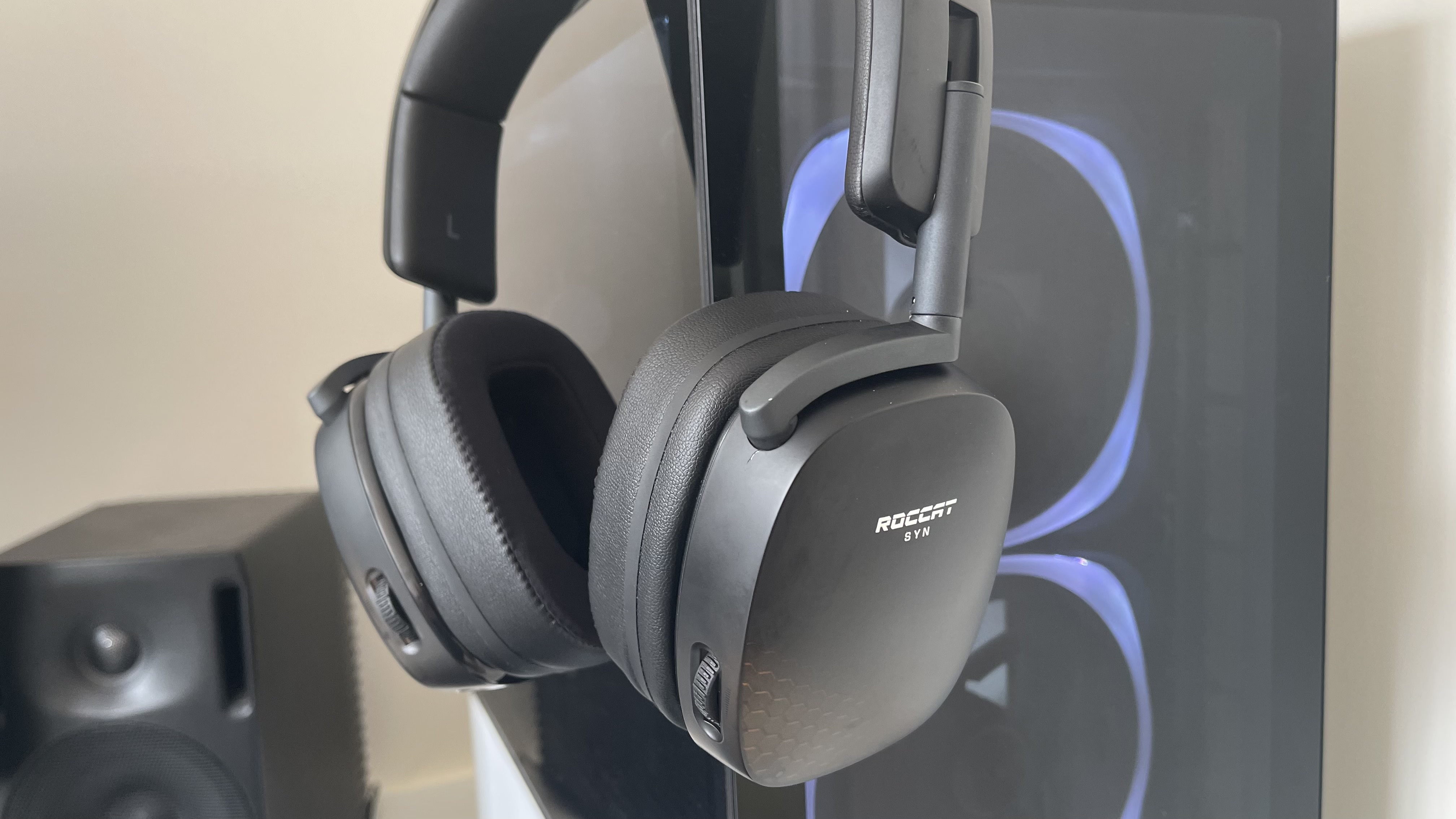GamesRadar+ Verdict
The Roccat Syn Max Air packs a lot of additional features into its price tag. While its treble-favoring audio won't be for everyone, then, there's certainly plenty of value for anyone seeking a high-end wireless gaming headset for PC.
Pros
- +
Dual-wireless connectivity
- +
High-speed charging stand
- +
Great comfort and build quality
Cons
- -
Sound is hardwired to emphasise high-end frequencies
Why you can trust GamesRadar+
It’s been tough for anybody besides SteelSeries to get major visibility in the headset market lately, thanks to the enduring popularity of its constantly evolving Arctis lines. That means companies like Roccat have had to work especially hard to turn heads - the German peripheral specialist doesn’t have dozens of models for each product category or vast marketing budgets capable of implanting superbowl ads. What it does have though, by the bucketful, is good ideas.
Its recent keyboard models have demonstrated a design team that’s keen to try new things and bring innovations to market, and with this Syn Max Air wireless gaming headset we’re being treated to more of the same. This is a fresh take on audio, ready to take on the best gaming headsets on the market. Available for $249.99 / £209.99, it’s pitched at the mid-to-premium end of the market, and justifies that pricing with a great big cupboard full of welcome features.
| Price | $249.99 / £209.99 |
| Acoustic design | Closed back, open ear |
| Connection | 2.4GHz USB-A, Bluetooth |
| Battery | 16 hours |
| Drivers | 50mm Turtle Beach Nanoclear |
| Frequency response | 20Hz - 20KHz |
| Mic | Unidirectional, detachable |
| Weight | 354g |
| Compatibility | PC, PlayStation, Nintendo Switch |
Design and Features
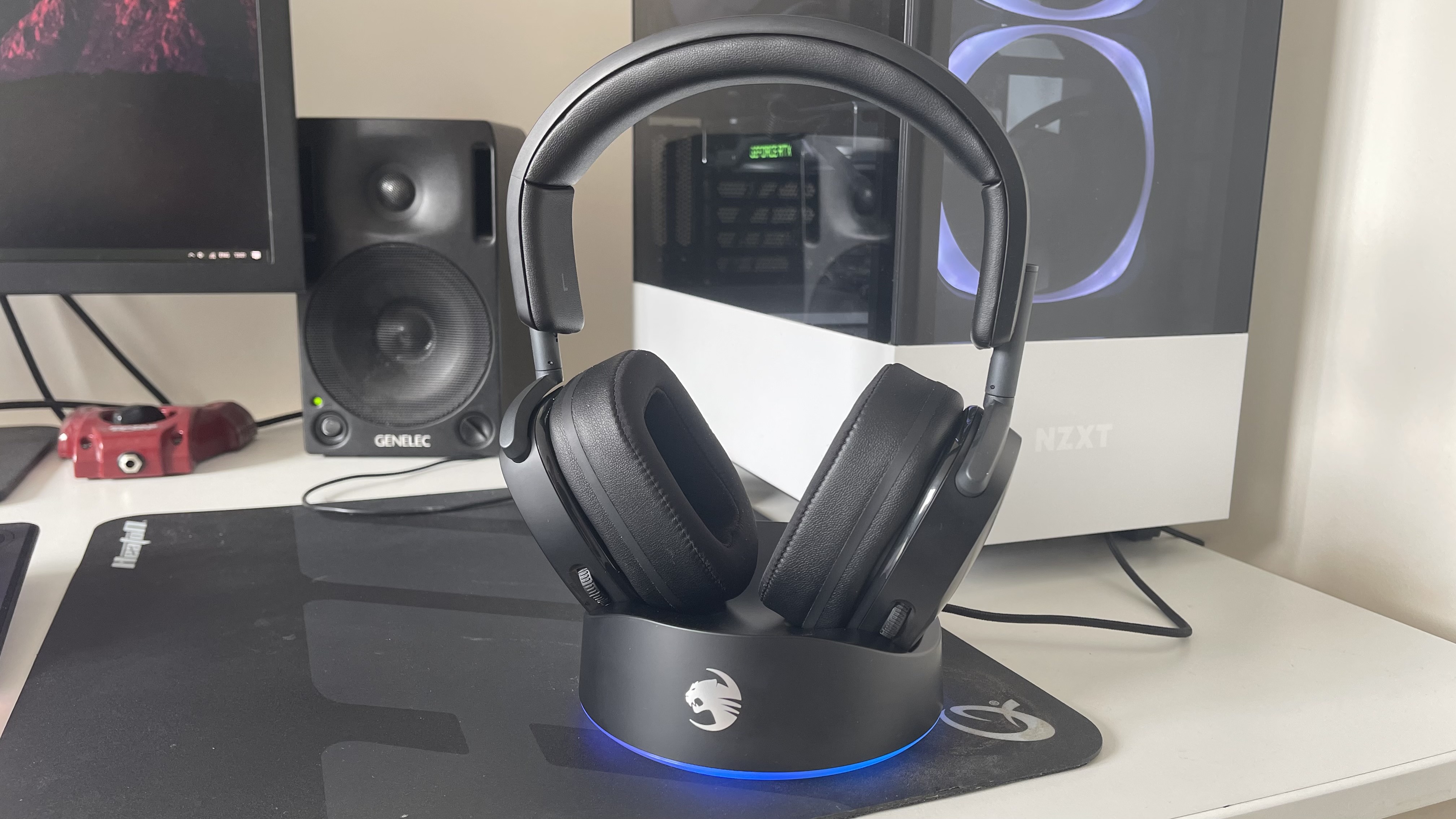
The first big tick on our checklist is the dual wireless connectivity, using both Roccat’s proprietary Stellar wireless tech and good old-fashioned Bluetooth (seriously, it’s been knocking around since 1999). That’s a big win for anyone who likes to use their gaming headset with multiple devices like smartphones and tablets besides their gaming PC or console, and it also safeguards against dropout in those crucial playcalling exchanges in competitive games.
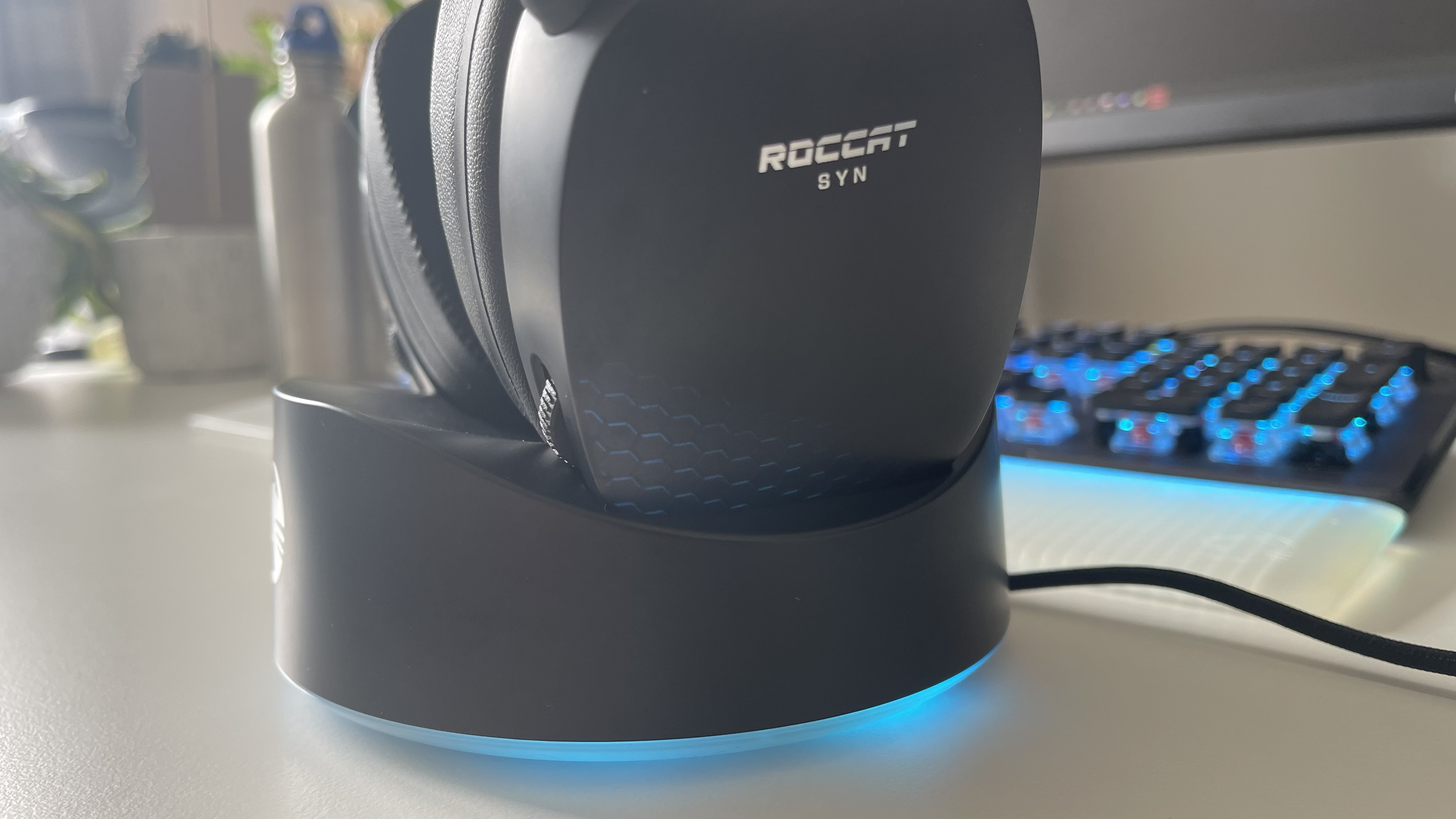
Less essential but just as welcome is the inclusion of a charging stand. Not just any charging stand, either - a high-speed charging stand with RGB and light indicators. When you mute the mic, for example, you’ll see the Syn Air Max’s stand glow red to confirm your mic’s no longer live. It’s not going to do anything for anyone’s K:D, but it’s evidence of how much thought’s been put into this headset and stand combo.
Lower down the priorities list, 3D audio is available via Waves Nx - rather than the more ubiquitous Dolby Atmos - and wireless charging time is superfast, with 16 hours of charge time on the box. In practice, that’s more like 13 hours even brand new. In order to get the 16, you’d need to turn off RGB and use Bluetooth connectivity only. A series of helpful tones, beeps and voiced messages lets you know the headset’s power and mic status and battery level.
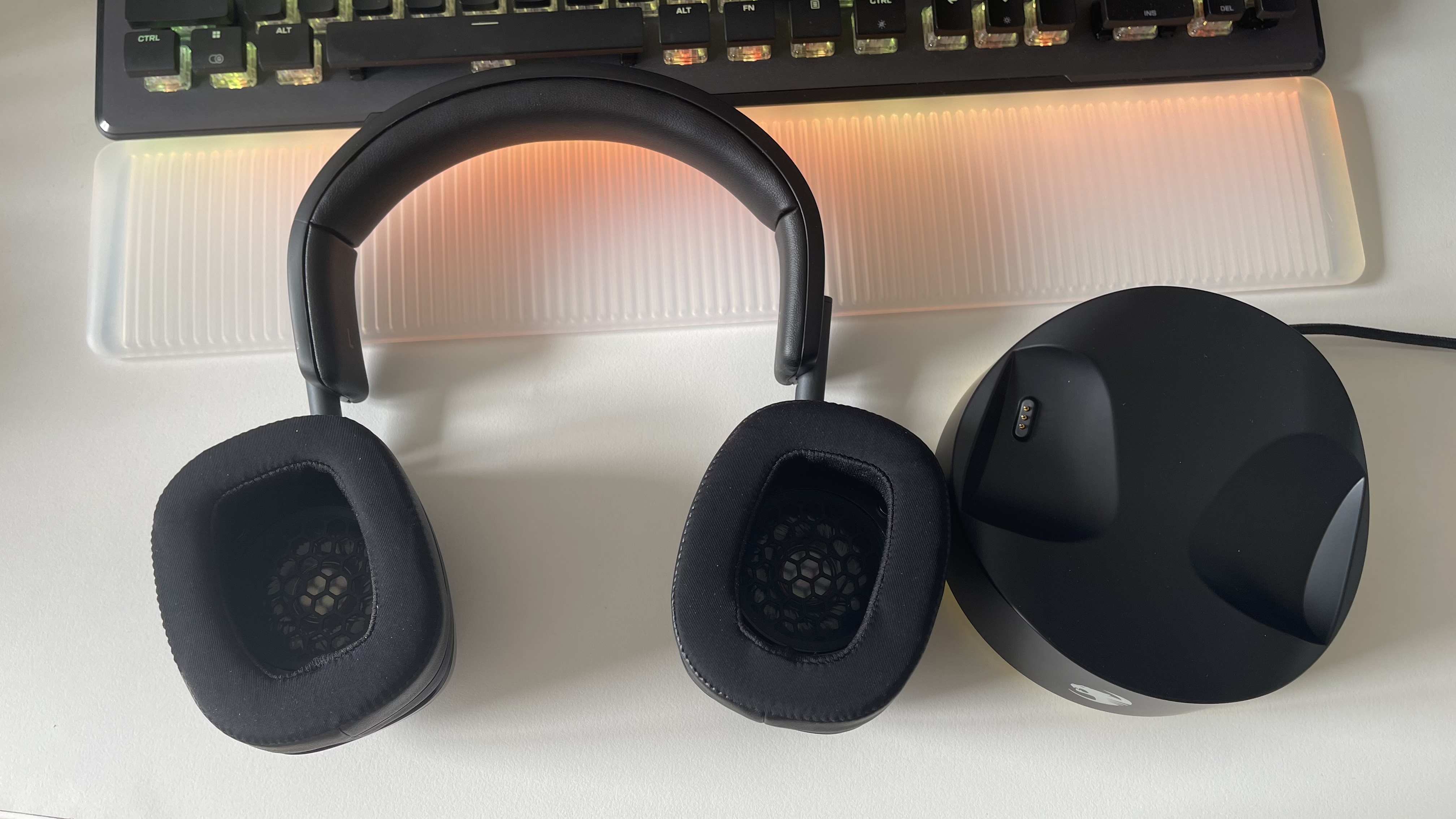
For comfort, the Syn Max Air’s a great design. The earcups are unusually narrow, but fit this reviewer’s larger ears perfectly and they’re cushioned so deeply that there’s no danger of your ear pressing against the 50mm drivers. The memory foam encased within the pleather finish feels really high-grade, and it’s designed to keep you cool, too. Currently in the UK we’re lucky if the temps hit double figures celsius, so we’ll have to revisit that particular feature when the feeling comes back to our extremities.
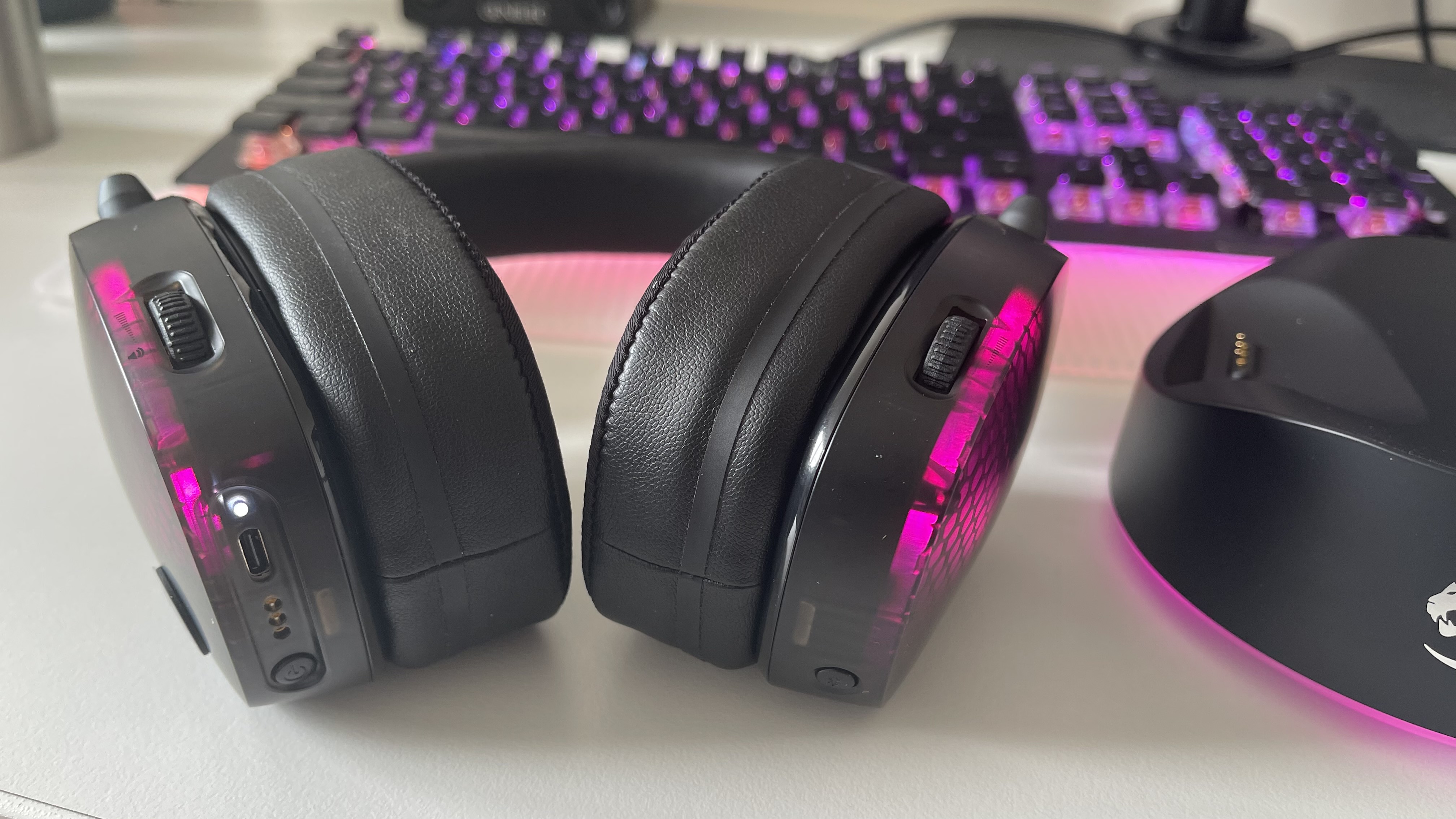
It comes close to a resounding pass on the looks front, too. Personally, I’m not sold on the honeycomb lattice design in the RGB-lit sections of the earcup and they feel part of an outdated ‘gamer’ aesthetic. This is totally subjective though - no marks are dropped for not appealing to this one writer’s very specific taste. Elsewhere it’s so simple and elegant, though: all-black, matte finish, with subtle branding elements like the Roccat logo imprint on the top of the headband and a restrained silver ‘Roccat Syn’ text in the centre of each earcup.
Performance
A lot of that excellent design and the generosity of features falls in danger of being undermined by a fiddly initial setup process. In order to install the headset and base unit on PC, and then access the Roccat Swarm software, you need to use every cable and adapter provided in the box. Base station to PC, headset to PC (via USB-C/USB adapter), two reboots, unplug and reconnect both base station and headset, and you’re finally in. Until the next firmware update, that is, when you’ll have to do that all again.

When both hardware and software are calibrated though, it’s a breeze to dial in your chat mix, game/Windows volume mix, and mic settings. Rival manufacturers have made great leaps forward with their mics lately, especially Corsair, and by comparison this sounds thinner and lacking body. However, it’s still perfectly clear and there’s no scratch or background hiss. Plus, you can set the noise gate level manually in Swarm and - my personal favourite feature - mic monitoring level.
It’s via the Swarm software that you can also access the 3D audio and Superhuman Hearing modes, just like you’d find in the options for a Turtle Beach headset. I play a lot of PUBG and CSGO, but personally I’ve never found either of these features to be performance-enhancing. I prefer to focus on dialling in the flattest EQ and most natural acoustic response possible.
And frustratingly - very frustratingly, given how excellent this headset is in every other area - I wasn’t able to find that sound. The audio here certainly isn’t bad, but it has a very distinctive characteristic that no amount of tweaking in Swarm can bring back to neutral. It emphasises higher frequencies and scoops out the low mids, which makes it easy to pick out sound cues in online games, but it’s not a characteristic of a versatile headset. Boosting the bass at software level to try to return some warmth and richness only introduces a digital-sounding thunder to the mix.
Should you buy the Roccat Syn Max Air?
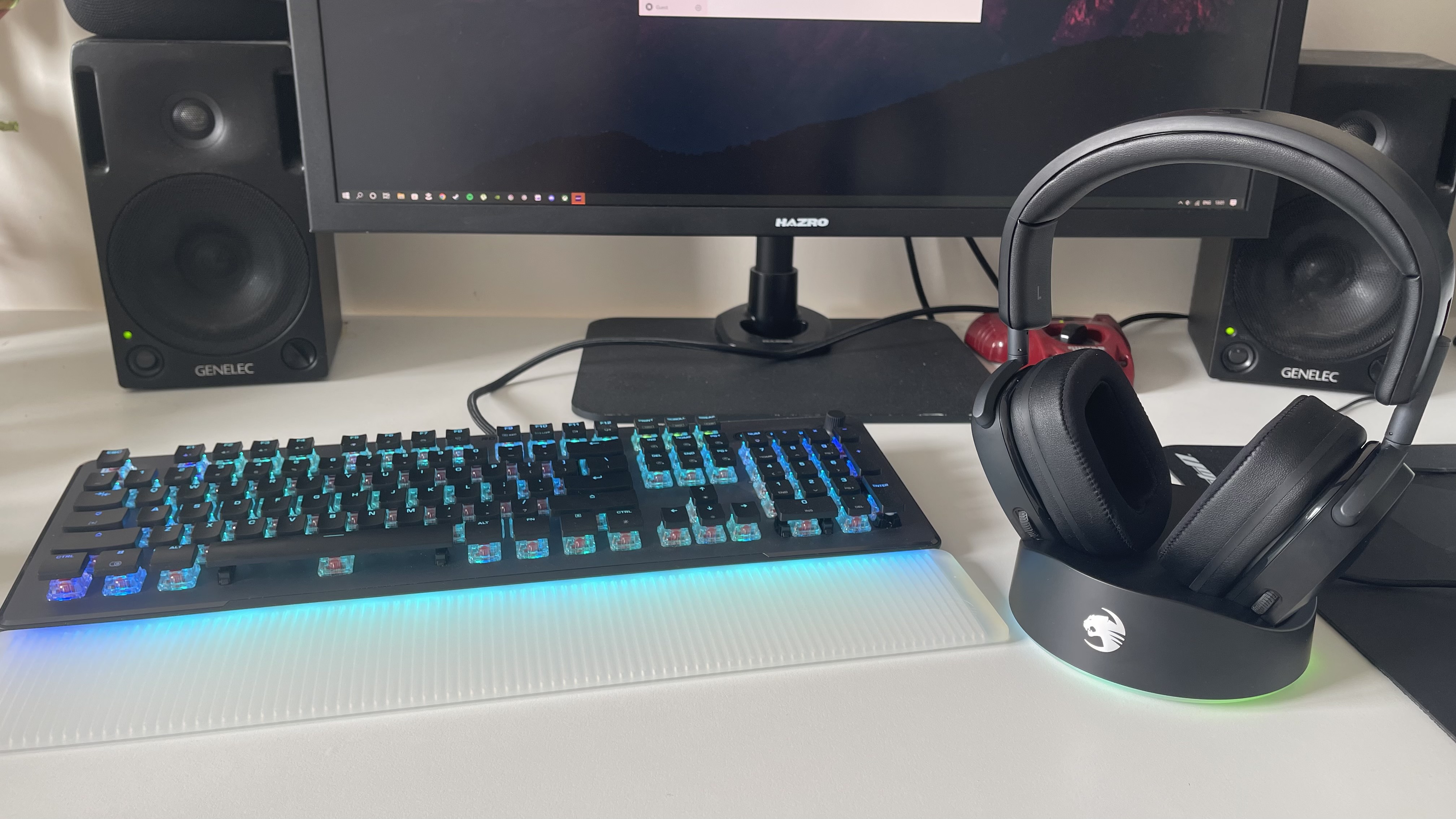
The sound is the only thing I didn’t love about this headset, at least once the setup was out of the way. You may love that same sound - just like the look, it’s subjective. But what isn’t subjective is that the Roccat Syn Max Air isn't as versatile as the SteelSeries Arctis 7 Nova or Corsair HS80. If you can live with the specific audio characteristics and the premium pricing, you’ve got so much else to enjoy. Fast charging, a stylish stand, comfort and build quality for days, and a solid mic.
How we tested the Roccat Syn Max Air
As ever, many hours of multiplayer gaming and Discord chat went into this Roccat headset’s evaluation. Many lives were lost, some chicken dinners were eaten, and seldom did anyone on Discord say “Say that again, you’re mic’s breaking up”. We listened to plenty of music too, applying different EQ settings to find the best audio for both gaming and Spotify. Find out more about how we test gaming headsets in the full GamesRadar+ Hardware Policy.
We're rounding up plenty more of the best PC gaming headsets as well as all the best PS5 headsets and Xbox Series X headsets for more choice as well.
Phil Iwaniuk is a multi-faceted journalist, video producer, presenter, and reviewer. Specialising in PC hardware and gaming, he's written for publications including PCGamesN, PC Gamer, GamesRadar, The Guardian, Tom's Hardware, TechRadar, Eurogamer, Trusted Reviews, VG247, Yallo, IGN, and Rolling Stone, among others.
